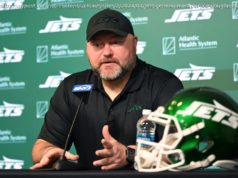Ralph Northam’s early life, growing up in Virginia’s rural Eastern Shore, provides clues about how his perspectives on race were shaped.
ONANCOCK, Va. — When the United States Supreme Court ordered school districts in 1968 to dismantle their segregated classrooms, Wescott and Nancy Northam had a choice to make.
As in much of the rest of the country, private schools had popped up in the Northams’ community on Virginia’s Eastern Shore. They were havens for white parents who did not want their children in the same classrooms as black students. Mr. Northam was a lawyer, his wife a nurse, so that option was well within their means.
But the Northams — whose ancestors were among the many white slaveowners to lay roots in this rich agricultural region in the early 1800s — made what seemed like a surprising decision for people of their stature.
They kept their sons, Thomas and Ralph, in public schools.
In a region where black and white people largely lived in different communities, Ralph Northam hung around black neighborhoods with black friends. He was one of two white players on the high school basketball team in 1977, his senior year. His class had 73 students — 37 black, 36 white.
“When Ralph came up, we were chasing footballs,” said Robert Garris Jr., who is black and a friend from childhood. “We were chasing basketballs, baseballs. We were fishing. We were crabbing. We didn’t see race.”
Many people are now wondering how this same Ralph Northam, now the governor of Virginia, could be the man who ended up with a racist photograph on his page in a medical-school yearbook. How he could have thought it a good idea to darken his face with shoe polish to moonwalk like Michael Jackson in a contest in the early 1980s. How he could have been unaware of the deep and resonant pain associated with blackface among the African-Americans he represents, until a staffer told him about it during his most recent campaign.
As Mr. Northam, Virginia and the national political establishment grapple with what’s next for him, an examination of his early life in the secluded, rural fishing town of Onancock, Va., provides some clues about what shaped his perspectives on race, and how he could have fallen so short in his understanding.
Though classmates from medical school and many people outside of Onancock are calling on him to resign, many of those who know him well from his hometown are pushing back against demands that he step down.
Mr. Northam, 59, came of age in Virginia in the 1960s and 70s, when it hardly would have been shocking to see white people darken their faces for costumes, several people who knew him said. He lived in a place where students could attend movies and eat together across racial lines, but did not date outside their race.
As a pediatric neurologist and volunteer medical director at a children’s hospice, Mr. Northam visited the homes of hundreds of African-American families in crisis. And yet, many people who know him best now worry that he may have missed some basic lessons about the struggles of his black neighbors. Gerald Boyd, who is black and has lived on the Eastern Shore since 1951, said Mr. Northam’s case was a cautionary tale that the nation’s racist conditioning can snare even well-meaning people.
“That conditioning slips out in the form of thoughts and feelings and words, jokes and deeds,” he said. “Until white people have a chance to talk about how they have been conditioned, it’ll sneak up on them.”
•
The Eastern Shore of Virginia, a jagged peninsula bordered by Maryland on its north, feels like an isolated outpost. Until 1964, when a 20-mile-long bridge-tunnel opened, it was only directly accessible to the rest of Virginia by ferry.
Landowners in Virginia owned more enslaved Africans than those in any other state, and the Eastern Shore was no exception. Around 1860, Accomack County, which includes Onancock, had the highest percentage of free black people in Virginia, said Dennis Custis, a former history teacher at Onancock High School.
Home
United States
USA — mix For Virginia Governor Grappling With Race, a Childhood Trying to See Beyond...






